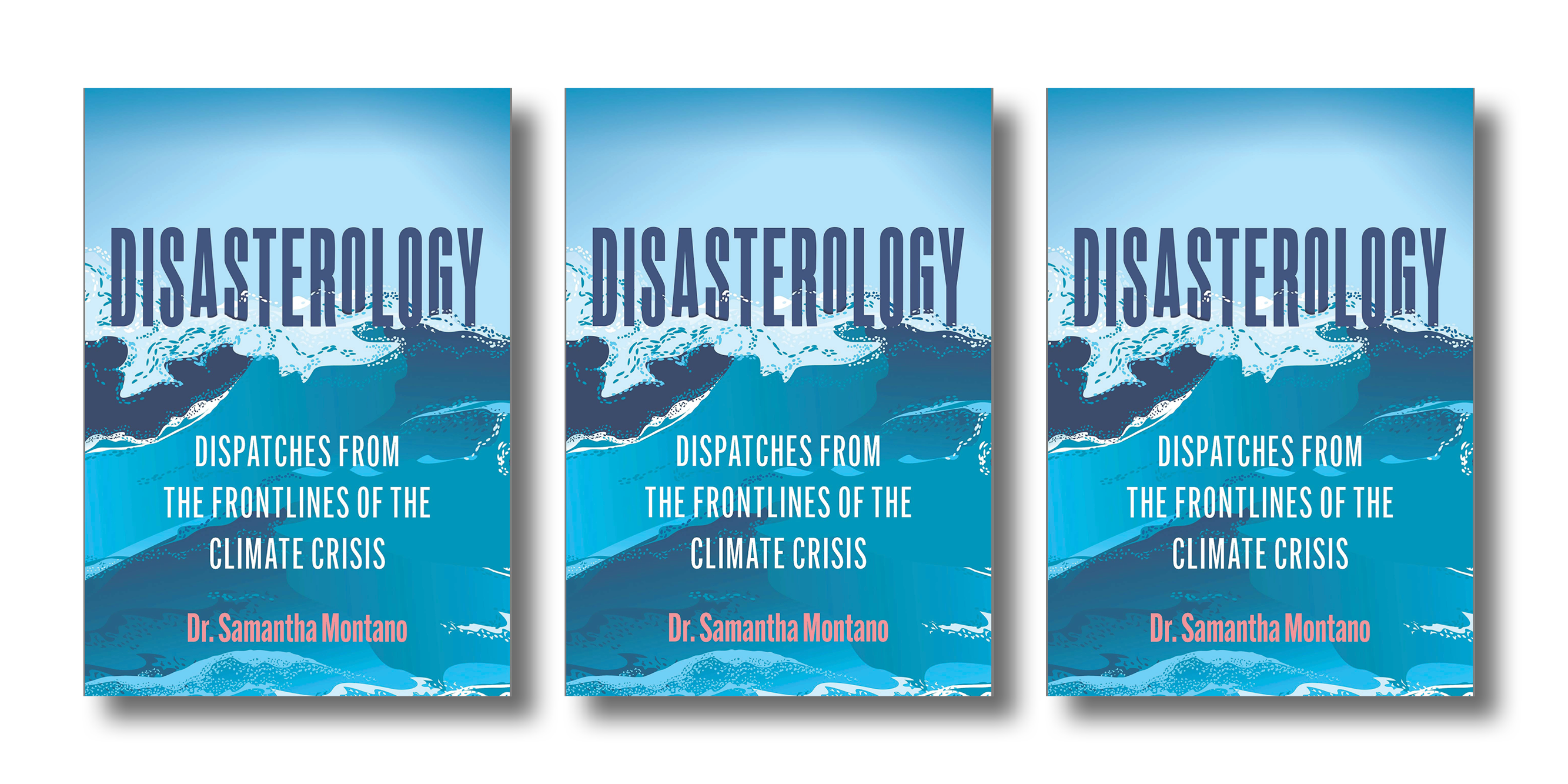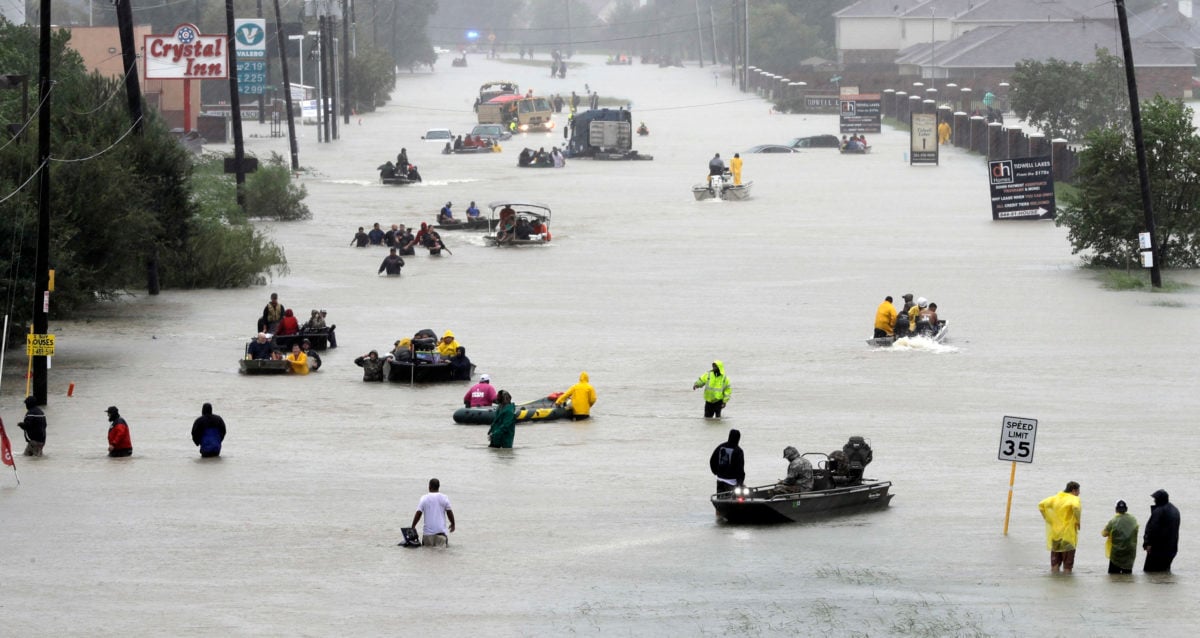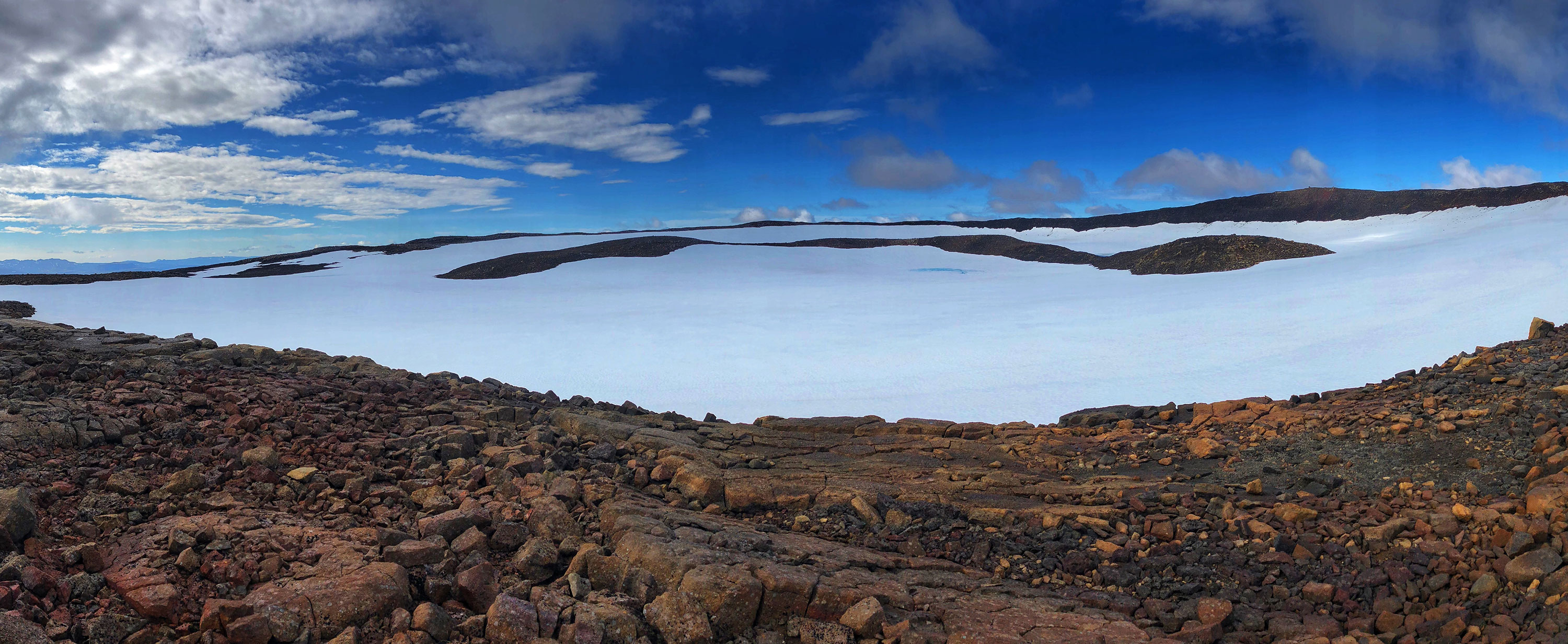
Samantha Montano Has ‘Disaster Vision’
A new book explores past natural disasters and how Texas remains unprepared for future storms, big and small.
Above: Disaster management expert Samantha Montano's new book "Disasterology: Dispatches from the Frontlines of the Climate Crisis."
In 1900, the deadliest hurricanes in American history struck Galveston Island. As many as 12,000 people—nearly a third of the island’s population—may have died. The booming city on the Gulf Coast was flattened as storm surges as high as eight feet crashed onto the shore.
More than 100 years later, Samantha Montano—an emergency management expert and self-proclaimed disasterologist—came to Texas to study the impacts of Hurricane Harvey on Southeast Texas. It was one of Texas’ worst hurricanes this century. At least so far.
Much had changed since the 1900 storm: Technological advances in flood control, for one, as well as the creation of state and federal agencies which could prepare, respond, and lead recovery in the aftermath. But there was one striking similarity. Just as in the 1900 storm, residents in the path of the storm had very little warning of the looming crisis. Back then, storm tracking systems were in their infancy, and by the time the storm was on the horizon, it was too late to get people out of harm’s way. In 2017, thanks to factors like abnormally warm waters in the Gulf, Harvey grew faster and stronger than meteorologists expected. There were no mandatory evacuation calls before the storm, although thousands fled the coast anyway. One hundred people died in the storm, which brought 30 inches of rain to some parts of Houston. Harvey was a climate change-fueled hurricane, a glimpse into what the future holds if fossil fuel consumption continues unchecked.

Much of Montano’s research centered on Texas: Just a year before Harvey, small-scale floods, also driven by changes in weather patterns, had upended people’s lives in the same region of Southeast Texas. In her new book, part memoir and part disaster management dispatches, Montano makes the case that natural disasters aren’t all that natural. Instead, it’s human decisions around everything from building cities to distributing aid that make disasters worse, particularly along the lines of race and class. As climate change amplifies the kinds of catastrophes we’re already used to, Montano argues, we have to urgently rethink how we prepare and recover from these crises. —Amal Ahmed
The following excerpt is adapted from Disasterology: Dispatches from the Frontlines of the Climate Crisis by Samantha Montano, published August 3. Used with permission by Park Row Books.
*
I was deep in the Maine woods at my family’s cabin on Rangeley Lake at the end of August 2017. I was there to get some writing done in peace and spend the last few days of summer on the lake. In the evenings I drove into town to use the Wi-Fi from the local coffee shop. On one of these trips I sat outside on a bench, watching the haze of the late afternoon sun settle over the lake. As my laptop slowly connected to the Wi-Fi the online world came rushing in.
Meteorologists were in a frenzy. I had to pause to catch my breath as I saw why. Twitter was flooded with maps of Texas covered in dramatic waves of deep orange, red, purple, and blue. Hurricane Harvey was brewing off the Yucatán Peninsula, but faced an unobstructed path over a warmer-than-usual Gulf of Mexico. It would collide into the Texas coast and Houston. I felt a tug in my chest. This one was going to be really bad. I pushed aside the work I had intended to do that week and moved into the town coffee shop to monitor the evolving hurricane maps. As I worked out which towns were under each color on the map, the tug in my chest tightened.
Climate writer Mary Annaïse Heglar has described the times she can envision the disasters that climate change will eventually lead to as “climate vision.” I experience a version of this—perhaps “disaster vision”—in the moments just before a disaster. It’s a reflex that came free with my doctoral degree in emergency management.
Harvey played out in my head days before it actually happened. I could see the destruction Texas was barreling toward. I could see the houses that would fill with water and the cots in shelters that would fill with people. I put placeholders in for the faces of the people who would die and tried not to think about the pain it would bring the people they would leave behind. For a moment, it’s like being haunted by ghosts who are not yet dead.
Sometimes these visions flash by in just minutes, but sometimes they linger on for days. This is always the hardest part for me because there is nothing in the moment that I can do to stop it from happening. I spiral through thoughts of all that could have been done to prevent the disaster from happening if only elected officials had acted earlier. It can also be lonely waiting for everyone else to understand what is about to unfold.
Harvey made landfall on the Texas coast on August 25 as a Category 4 hurricane. Five feet of rain fell across East Texas before the storm continued farther east for a final landfall in Louisiana. So much rain fell that the National Weather Service had to add two new colors—dark purple and light purple—to the maps in order to accurately reflect the rainfall totals. Harvey broke the U.S. record for the most precipitation from a hurricane.
The storm was exactly as devastating as I expected it to be from the moment I first saw the multicolored maps. Harvey, the largest hurricane to make landfall in the U.S. since 2005, required the most significant response since Superstorm Sandy in 2012. The blank faces I had imagined days earlier were filled in as the photos of the 70 people killed in the storm were published in local news outlets. Thirteen million people were affected and over 40,000 took refuge at shelters. Hundreds of thousands of buildings were damaged and an estimated 1 million cars were destroyed. Damage topped $125 billion.
I would have watched this storm regardless of where in the world it was headed, but I had just finished writing my doctoral dissertation on flooding in this exact part of Texas so I was particularly attuned to the damage to come. Harvey would challenge any state, but I knew this was more than Texas could handle. In the space between what Texans would need and what local emergency management could provide were thousands, if not millions, of people who would suffer. Texans would be quickly overwhelmed and would need help from neighboring states and the federal government.
East Texas had four presidentially declared floods in the two years preceding Harvey. The Memorial Day Flood of 2015 brought 11 inches of rain. The remnants of Hurricane Patricia in October 2015 brought nine inches. The Tax Day Flood in April 2016 brought 17 inches and two months later, a flood in June 2016 brought 18 inches. These numbers paled in comparison to Harvey’s 60 inches of rain, more than three times as much as these previous floods.
It is most often the big disasters, like Harvey, that capture our attention, because their death tolls are high and their economic impacts vast. But I think it is the comparatively smaller, often overlooked disasters like the Tax Day Flood, that are most instructive about our future. The response to these persistent, repetitive, disasters that are bigger than the flooding in Camp Ellis but smaller than Katrina, wear communities down and, in many ways, are more challenging. They come with relatively few deaths and little national media attention. They do not get special bills in Congress to help survivors rebuild. The donations dry up quickly and volunteers don’t come to help a decade later. They are the disasters that largely leave local communities on their own to survive.
*
Mass evacuations are grueling. Moving millions of people in a matter of hours requires extensive planning, supportive infrastructure, clear and constant communication, adequate resources, and a little bit of luck. Fortunately though, most disasters do not require millions of people to move across state lines. There was no mass evacuation during the Tax Day Flood, but many people did have to leave their homes.
On my way to Texas I scrolled through social media posts, sent emails to contacts based in Houston, and monitored official government communications. I watched as street after street went under water in real time. I had a map of the city printed out and marked down the areas where I saw flooding reported. Yet, as I watched the disaster start to unfold online, I had a hard time figuring out how many people in Houston saw the flood warnings and were able to get to safety. The warnings were staggered and changed constantly over the course of many days as the flooding worsened. Monitoring the warnings required constant vigilance.
In Houston many found evacuation wasn’t an easy option because the roads and their cars were already flooded by the time they realized it was necessary to leave. Once they were able to make their way out of the flooded areas some didn’t have anywhere to go. In most disasters, relatively few people stay at shelters. Most stay with friends or family or they are able to rent a hotel room. In Houston, however, thousands of people needed a place to stay, so shelters were opened around the city. Many people arrived via city buses, wet from having waded through the rain and flood water.
There was one picture I saw circulating online that showed a group of people floating an air mattress through the floodwaters. Sitting on the mattress was a woman holding onto two small children. I thought of a line in a poem by Warsan Shire: “No one puts their children in a boat unless the water is safer than the land.” The image felt so familiar to me. It could have been taken during any number of floods in the past 50 years, but this time I couldn’t look away.
This particular flood did not happen quickly, unfolding instead over many days. The city had so much experience with flooding that knowing which areas would flood shouldn’t have been a surprise. I think this is why I struggled with the photo of the kids on the mattress so much. The family should have been warned in plenty of time to leave before the streets filled with water. The photo signaled a disconnect between warnings that gave me enough time to fly across the country, but not enough time for people to evacuate their homes to shelters just a few blocks away. This picture, to me, meant that something had gone wrong.


